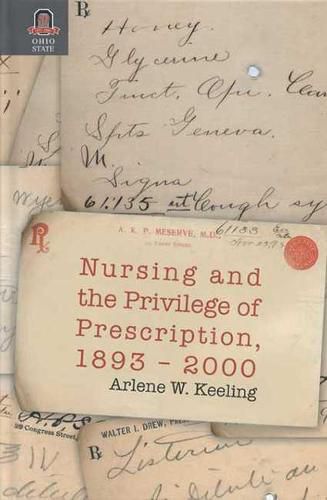Readings Newsletter
Become a Readings Member to make your shopping experience even easier.
Sign in or sign up for free!
You’re not far away from qualifying for FREE standard shipping within Australia
You’ve qualified for FREE standard shipping within Australia
The cart is loading…






This title is printed to order. This book may have been self-published. If so, we cannot guarantee the quality of the content. In the main most books will have gone through the editing process however some may not. We therefore suggest that you be aware of this before ordering this book. If in doubt check either the author or publisher’s details as we are unable to accept any returns unless they are faulty. Please contact us if you have any questions.
Considerable controversy exists at the state and national level both within and among the professions of medicine, nursing, and pharmacy concerning the issue of granting and/or expanding the privilege of prescription to nurses. Arlene W. Keeling identifies and describes the informal and formal roles nurses played over the course of the twentieth century in dispensing, furnishing, and prescribing medications. The book is built around a series of case studies representing diverse geographic areas of the United States during different decades. The major thesis of Nursing and the Privilege of Prescription, 1893-2000 is that the amount of freedom nurses have had with regard to medications has been dependent on the particular setting in which they practiced, on individual practice negotiations between physicians and nurses at the grassroots level, and on the level of trust that developed between them. Even before they had legal prescriptive authority, nurses safely and effectively administered drugs at various times and places throughout the century. Providing care in underserved areas of the country-in urban slums, in the remote hollows of Appalachia, and on Indian reservations-nurses offered access to care for many who would otherwise have been denied it. The struggle between organized medicine and nursing over where, to whom, and in what circumstances a practitioner is licensed to dispense, furnish, or prescribe drugs is the central tension of the book. What is clear throughout this history is that the elusive and fine line between medicine and nursing is fluid, especially in times and places where nurses are particularly needed. Nursing and the Privilege of Prescription, 1893-2000 provides historical data that could inform health policy today.
$9.00 standard shipping within Australia
FREE standard shipping within Australia for orders over $100.00
Express & International shipping calculated at checkout
This title is printed to order. This book may have been self-published. If so, we cannot guarantee the quality of the content. In the main most books will have gone through the editing process however some may not. We therefore suggest that you be aware of this before ordering this book. If in doubt check either the author or publisher’s details as we are unable to accept any returns unless they are faulty. Please contact us if you have any questions.
Considerable controversy exists at the state and national level both within and among the professions of medicine, nursing, and pharmacy concerning the issue of granting and/or expanding the privilege of prescription to nurses. Arlene W. Keeling identifies and describes the informal and formal roles nurses played over the course of the twentieth century in dispensing, furnishing, and prescribing medications. The book is built around a series of case studies representing diverse geographic areas of the United States during different decades. The major thesis of Nursing and the Privilege of Prescription, 1893-2000 is that the amount of freedom nurses have had with regard to medications has been dependent on the particular setting in which they practiced, on individual practice negotiations between physicians and nurses at the grassroots level, and on the level of trust that developed between them. Even before they had legal prescriptive authority, nurses safely and effectively administered drugs at various times and places throughout the century. Providing care in underserved areas of the country-in urban slums, in the remote hollows of Appalachia, and on Indian reservations-nurses offered access to care for many who would otherwise have been denied it. The struggle between organized medicine and nursing over where, to whom, and in what circumstances a practitioner is licensed to dispense, furnish, or prescribe drugs is the central tension of the book. What is clear throughout this history is that the elusive and fine line between medicine and nursing is fluid, especially in times and places where nurses are particularly needed. Nursing and the Privilege of Prescription, 1893-2000 provides historical data that could inform health policy today.